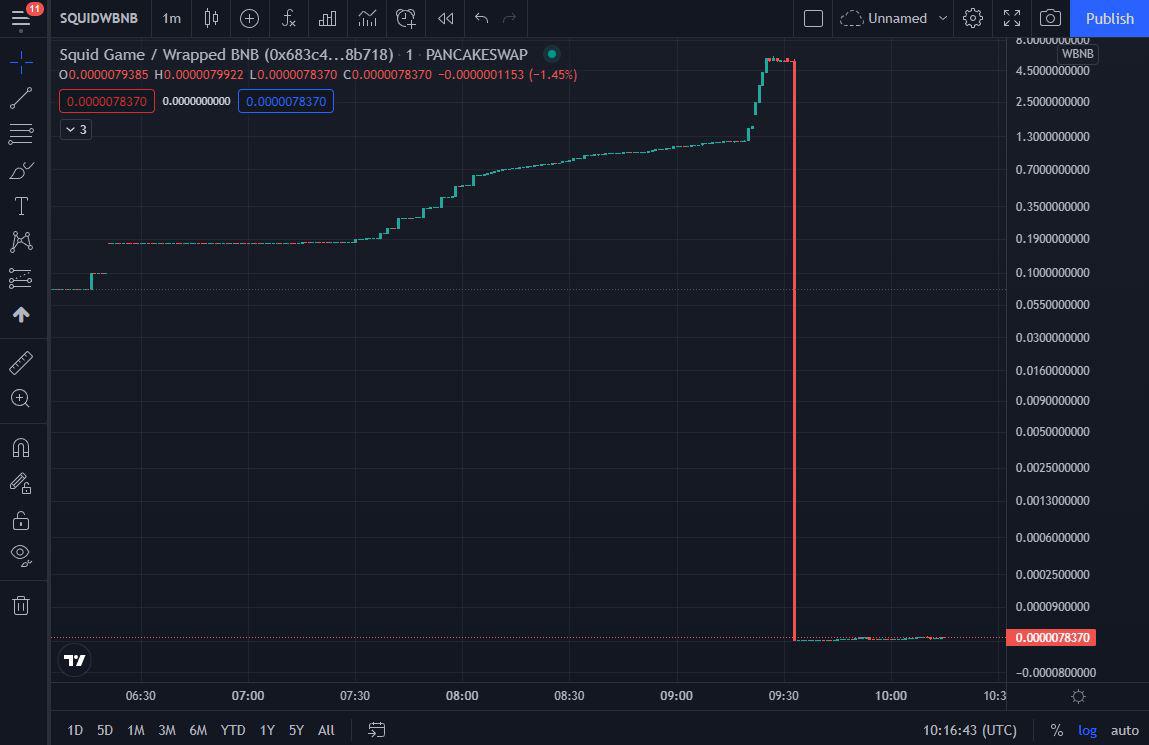Crypto Scams: How to Spot and Avoid Them

Staying Safe in Crypto: How to Identify and Avoid Common Scams
The exciting world of cryptocurrency offers innovation and opportunity, but its rapid growth and unique characteristics also attract a significant number of scammers. Fraudulent schemes targeting crypto investors are increasingly common and sophisticated. Because crypto transactions on the Blockchain are generally irreversible, falling victim to a scam often means permanent financial loss. Therefore, understanding common scam tactics and cultivating a vigilant mindset are essential for safely navigating the digital asset landscape. This guide outlines prevalent crypto scams and provides actionable steps to protect yourself.
Why is Crypto a Target for Scammers?
Several factors make the cryptocurrency space attractive to fraudsters:
- Irreversible Transactions: Once confirmed on the blockchain, transactions cannot be easily reversed, making stolen funds difficult to recover.
- Pseudonymity: While transactions are public, user identities are often not directly linked to wallet addresses, offering a degree of anonymity for illicit actors.
- Complexity for Newcomers: The technical nature of crypto can be confusing for beginners, making them more susceptible to deceptive schemes.
- Hype and FOMO: Rapid price movements and social media hype create a sense of urgency (Fear Of Missing Out), which scammers exploit to bypass critical thinking.
- Global Reach: Crypto operates across borders, making it harder for local law enforcement to track and prosecute international scams.
- Regulatory Gaps: While regulations are evolving, inconsistencies and gaps still exist, which scammers exploit.
High-Profile Cautionary Tales
Large-scale deception has unfortunately occurred even involving prominent figures and platforms, highlighting the need for constant skepticism:
- Ruja Ignatova ("Cryptoqueen") & OneCoin: A classic example of a massive global Ponzi scheme wrapped in crypto buzzwords. Ignatova promoted OneCoin as a revolutionary cryptocurrency, attracting billions in investments primarily through multi-level marketing before disappearing in 2017. OneCoin lacked a real blockchain or any underlying value, relying solely on funds from new recruits to pay earlier investors. See: Ruja Ignatova.
- Sam Bankman-Fried & FTX: The collapse of the FTX exchange in 2022 wasn't a typical scam like OneCoin, but rather a case of alleged massive fraud, corporate mismanagement, and the misappropriation of customer funds held on a centralized platform. It demonstrated the counterparty risks involved in trusting centralized entities and the devastating impact when that trust is broken. See: Sam Bankman.
These examples, though different, underscore that investors must remain vigilant and perform due diligence, regardless of a project's perceived popularity or the charisma of its leaders.
Common Crypto Scam Types & How to Avoid Them
Be aware of these prevalent scam tactics:
1. Phishing Scams
- What it is: Attackers impersonate legitimate entities (exchanges, wallets, projects) via fake emails, websites, social media messages, or direct messages (DMs) to trick you into revealing sensitive information like login credentials, private keys, or seed phrases.
- How to Avoid:
- Verify URLs Meticulously: ALWAYS double-check website addresses before logging in or connecting your wallet. Bookmark official sites. Look for tiny misspellings or different domain extensions (e.g., .com vs. .net vs. .org).
- Never Share Keys/Seeds: Your private keys or seed phrase grant full access to your funds. No legitimate service will EVER ask for them.
- Beware Unsolicited Contact: Be highly suspicious of unexpected emails, DMs, or support messages asking for information or prompting urgent action. Contact support only through official website channels.
- Use Hardware Wallets: Confirm transaction details directly on your hardware wallet's secure screen before approving, as malware could alter details shown on your computer. Link: How To Store Crypto.

2. Investment Scams (Ponzi/Pyramid/High-Yield)
- What it is: Schemes promising unrealistically high, guaranteed returns with little or no risk. Ponzi schemes use funds from new investors to pay earlier ones. Pyramid schemes focus on recruiting new members, whose fees pay those higher up.
- How to Avoid:
- "Too Good To Be True" Rule: If returns sound unbelievable (e.g., "double your crypto in 24 hours," "guaranteed 10% daily profit"), it's virtually always a scam. Legitimate investing involves risk.
- Recruitment Pressure: Heavy emphasis on recruiting others as the primary way to earn is a major red flag for pyramid schemes.
- Lack of Transparency: Avoid platforms secretive about their team, business model, or how they generate returns. Demand clarity.
3. Fraudulent Projects (Fake ICOs/IDOs/Token Sales)
- What it is: Scammers create fake websites, whitepapers, and marketing hype for a non-existent cryptocurrency or project, collecting funds from investors during an Initial Coin Offering (ICO), Initial DEX Offering (IDO), or other token sale, then disappearing.
- How to Avoid:
- Thorough Research (DYOR): Investigate the project deeply. Link: Do Your Own Research (DYOR).
- Team: Are they anonymous or pseudonymous? Can their identities and experience be verified? Anonymous teams are extremely high-risk.
- Whitepaper: Is it clear, detailed, professional, and original (check for plagiarism)? Does the proposed solution make sense?
- Tokenomics: Understand the token supply, distribution (beware large % held by team), and utility.
- Community: Is there genuine discussion and engagement, or just bots and hype?
- Code Audit: Has the smart contract code been audited by a reputable firm? (Note: Audits reduce risk but don't eliminate it).
- Thorough Research (DYOR): Investigate the project deeply. Link: Do Your Own Research (DYOR).
4. Rug Pulls
- What it is: Common in the DeFi space, especially with new tokens on Decentralized Exchanges (DEXs). Developers list a token, attract investors who provide liquidity (pairing the new token with a valuable one like ETH or BNB), and then suddenly withdraw all the valuable base liquidity, leaving holders with worthless project tokens.
- How to Avoid:
- Team Anonymity: Again, a huge red flag.
- Liquidity Locking: Check if a significant portion of the initial liquidity pool is verifiably locked for a substantial period using third-party services (e.g., Unicrypt, Team Finance). Unlocked liquidity means developers can remove it at any time.
- Token Distribution: Be wary if developers or a small number of wallets hold a massive percentage of the token supply.
- Code Audits & Logic: Check for audits and review contract functions if possible (look for malicious withdrawal functions).

5. Fake Exchanges, Wallets, and Apps
- What it is: Scammers create malicious clones of popular exchanges, wallets, or crypto-related apps. These look identical but are designed to steal login credentials, private keys, or deposited funds. They might appear as sponsored results in search engines or be promoted via social media.
- How to Avoid:
- Use Reputable Platforms: Stick to well-established exchanges and wallets with strong security reputations. Refer to our Exchanges page and guides like How To Store Crypto. Examples: Coinbase, Binance, Kraken, Ledger, Trezor, MetaMask, Trust Wallet.
- Official Sources Only: Download software ONLY from official websites or official app stores (Apple App Store, Google Play Store). Be wary of direct download links from unverified sources.
- Verify URLs: Always triple-check the website address bar before logging in.
6. Social Media & Impersonation Scams
- What it is: Scammers use platforms like Twitter, Telegram, Discord, Instagram, or even dating apps. Tactics include:
- Fake Giveaways: Promising to double your crypto if you send some first ("verification fee").
- Celebrity/Influencer Impersonation: Fake profiles promoting scams or asking for funds/info.
- "Support" Staff DMs: Fake support agents contacting you via DM asking for your seed phrase or remote access to "fix" a non-existent issue.
- Romance Scams: Building online relationships then convincing the victim to "invest" in a fake crypto platform or send funds.
- How to Avoid:
- Extreme Skepticism of DMs: Assume any unsolicited crypto-related DM offering help or deals is a scam. Legitimate support happens through official channels initiated by you.
- Verify Profiles: Check follower counts, account age, verification status (though verification can sometimes be faked or bought). Cross-reference with known official profiles.
- Giveaways Don't Ask for Funds: Real promotions never require you to send crypto to receive crypto.
- Never Send Crypto Based on Online Relationships/Promises: Be incredibly wary if someone you only know online asks for crypto or directs you to an unknown investment platform.
7. Malware & Clipper Scams
- What it is: Malicious software installed on your device (often via fake downloads or phishing links) can steal private keys stored insecurely, log keystrokes, or monitor your clipboard. "Clipper" malware specifically replaces a copied cryptocurrency address with the scammer's address just before you paste it into a transaction.
- How to Avoid:
- Use Strong Antivirus/Anti-Malware: Keep it updated and run regular scans.
- Keep Systems Updated: Apply OS and browser security patches promptly.
- Download Software Carefully: Only download from trusted sources.
- Double/Triple-Check Addresses: Crucially, always verify the entire recipient wallet address (or at least the first and last 6-8 characters) matches the intended address after pasting it and before confirming the transaction. Do this check directly on your hardware wallet screen if using one.
8. NFT Scams
- What it is: Scams specific to Non-Fungible Tokens include fake minting websites, phishing links disguised as exclusive offers sent via Discord/Twitter, manipulated bids on marketplaces, or selling NFTs based on stolen artwork. Learn more about the NFT space: Are Nfts Dead?.
- How to Avoid:
- Verify Mint Links/Contracts: Only use official links from verified project sources for minting. Check contract addresses on block explorers.
- Beware of Urgent/Too-Good-To-Be-True Offers: Scammers create false urgency.
- Secure Your Wallet Connection: Be cautious about which sites you connect your wallet to. Review and revoke unnecessary permissions regularly.
9. Pump-and-Dump Schemes
- What it is: Groups coordinate to artificially inflate the price of a low-market-cap, illiquid coin through aggressive promotion and hype (the "pump"). Once the price surges, the initial insiders or promoters sell off their holdings ("dump"), causing the price to crash and leaving later buyers with losses.
- How to Avoid:
- Be Skeptical of Hype: Especially for obscure coins with little development or utility, promoted heavily in private groups or by unknown influencers promising quick riches.
- Check Fundamentals: Look for genuine utility, development activity, and organic community growth, not just price speculation.
General Principles for Staying Safe in Crypto
Beyond specific scam types, adopt these core principles:
- If It Sounds Too Good To Be True, It Absolutely Is. Guaranteed high returns without risk do not exist in legitimate finance or crypto.
- Protect Your Private Keys & Seed Phrase Like Your Life Savings. They are the keys to your savings. Never share them, store them securely offline.
- Verify Relentlessly. Don't trust; verify. Check URLs, contract addresses, identities, claims, and announcements through multiple official sources.
- Practice Strong Security Hygiene. Use unique strong passwords, app-based 2FA, keep software updated, use hardware wallets for significant funds.
- Start Small & Educate Yourself. Don't invest significant money until you understand the technology, the specific asset, and the risks involved. See: Crypto For Beginners.
- Understand Transaction Irreversibility. Double-check all transaction details (address, amount, network) before sending, as mistakes or funds sent to scammers cannot be reversed.

What To Do If You Suspect or Become Victim of a Scam
- Stop Immediately: Cease all interaction with the suspected scammer or platform. Do not send any more funds.
- Secure Remaining Assets: If you suspect your keys/credentials were compromised, immediately move any remaining funds you can access to a new, secure wallet whose keys have never been exposed.
- Report: Report the scam website/profile/address to the relevant platform (exchange, social media site, domain registrar, wallet provider).
- Inform Authorities: Report the incident to relevant law enforcement or consumer protection agencies (e.g., FTC, FBI IC3 in the US, Action Fraud in the UK, or your local cybercrime unit). Provide as much detail as possible.
- Warn Others: Share information (cautiously, without revealing personal details) in relevant communities to help prevent others from falling victim.
- Acceptance: Unfortunately, recovering stolen crypto is extremely difficult and often impossible. Focus on securing what's left and learning from the experience. Beware of "recovery scams" that promise to get your crypto back for an upfront fee – these are almost always further scams.
Conclusion: Vigilance is Your Best Defense
The cryptocurrency space offers incredible innovation, but it requires users to be more vigilant and responsible for their own security than traditional financial systems. Scams are pervasive and constantly evolving. However, by understanding common tactics, practicing rigorous security hygiene, maintaining a healthy dose of skepticism, and committing to continuous learning and research (DYOR), you can significantly reduce your risk exposure. Protect your keys, verify information, question unrealistic promises, and navigate the exciting world of crypto safely.







